Log in or create new account to save this product to your wishlist.
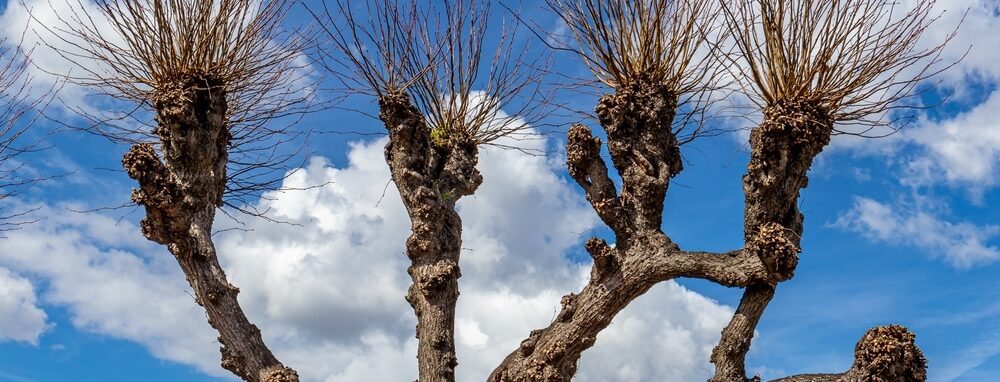
How to Master Tree Pollarding: A Practical Guide
Pretty dense! What might be an insult to some, is certainly a compliment to trees. Through pollarding, you can make sure, your trees have a dense crown of beautiful leaves.
🌱 All important maintenance moments for your lawn during the year. Leave your email and we will send you the lawn calendar for free.
Enter your email
Receive the lawn calendar in the mail
Enjoy a green lawn all year round!
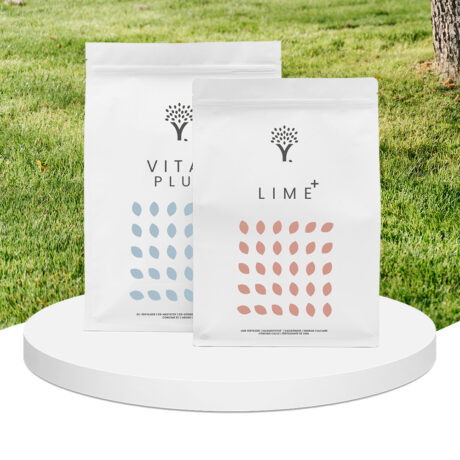
- Order by 2PM = shipped today
- 250.000+ satisfied customers!
- 60 day satisfaction guarantee
In a way, pollarding is just another word for pruning. This technique is ages old and encourages new shoots and creates a denser, stronger canopy. Aside from the obvious aesthetic benefits, this method helps create and maintain wind protection in your garden. By removing tall branches, you might get more sunlight through.
From London planes to common limes, numerous tree species thrive under this pruning regime. We’ll guide you through everything you need to know about pollarding, from selecting the right trees to mastering the cutting techniques that will keep your garden looking its best.
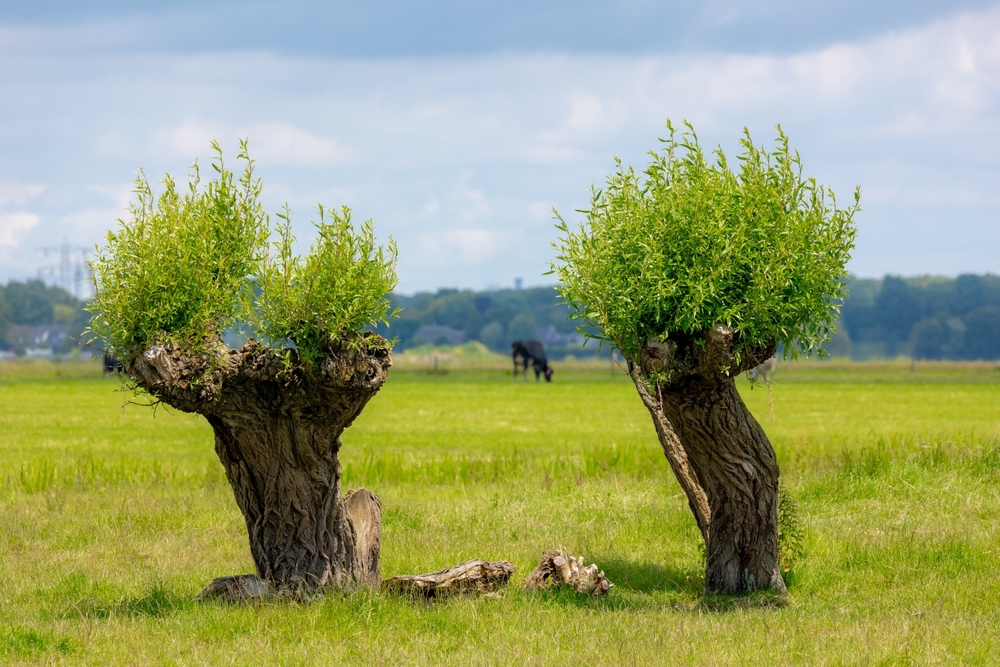
What is tree pollarding?
The term “pollarding” originates from the word “poll,” which historically described the top of the head. This pruning technique involves methodically removing the upper branches of a tree to encourage a dense head of foliage and new branch growth—essentially giving the tree a haircut.
Key benefits for garden trees
Pollarding has numerous advantages, including:
- Size control
- Less shade throwing
- Health improvement
- Safety enhancement
- Extended lifespan
- Fuller canopy
Pollarding vs. topping
Despite superficial similarities, pollarding differs from topping. Primarily, pollarding begins when trees are young and follows a regular maintenance schedule, whereas topping typically occurs when mature trees become problematically large.
Moreover, pollarded trees develop characteristic “knuckles” or “pollard heads” at cutting points—swollen areas that form over years of regular pruning. These knuckles act as natural termination points for branches and serve as the source for each year’s new growth.
To achieve this, pollarding cuts are made carefully at the branch collar, neither leaving stubs nor cutting into the knuckle. Therefore, pollarding enhances tree health when done properly. Topping is more about managing size.
Pollarding vs. coppicing
Coppicing is also different from pollarding. It involves cutting trees down to ground level, encouraging multiple stems to grow from the stump. This technique is typically used in woodland management for timber or biomass production. While pollarding maintains a tree’s height and shape, coppicing allows for rapid regrowth and harvesting cycles. Both methods promote tree longevity and can increase biodiversity by creating varied habitats for wildlife.
Trees that benefit from pollarding
Trees that produce new foliage quickly and can produce water shoots are generally suitable for pollarding. Tolerance to stress is also a characteristic pollarding trees share. Willows, for example, are among the best candidates for pollarding.
Common Lime (Tilia x europaea)
London Plane (Platanus x hispanica)
Willow (Salix species)
Hornbeam (Carpinus betulus)
Beech (Fagus sylvatica)
Oak (Quercus robur)
Ash (Fraxinus excelsior)
Hazel (Corylus avellana)
Maple (Acer species)
Mulberry (Morus species)
Horse Chestnut (Aesculus hippocastanum)
Catalpa (Catalpa bignoides)
Evergreen options for year-round structure
Though less commonly pollarded than deciduous varieties, certain evergreens respond positively to this technique:
- Holly (Ilex spp.)
- Yew (Taxus spp.)
- Bay Laurel (Laurus nobilis)
- Eucalyptus (Eucalyptus gunnii)
Trees to avoid pollarding
Not all trees tolerate pollarding well. Avoid this technique with:
- Older, established trees. Pollarding these can trigger disease or decay, potentially leading to tree loss
- Trees with weaker wood prone to producing multiple shoots, like poplar (Populus) and some willow (Salix) varieties, as they can become hazardous over time
- Species that don’t produce epicormic growth naturally
How to pollard a tree: step-by-step guide
Initially, allow your young tree to grow until it reaches the desired height—typically maintaining the pollard at least 6 feet (1.83 m) above ground for safety. The optimal time for pollarding is late winter or early spring, when the tree is dormant and doesn’t show any signs of leave growth. Notably, avoid autumn pruning, as decay fungi may enter cuts during this period. Except for Acer species. They should not be pollarded in spring due to potential sap bleeding.
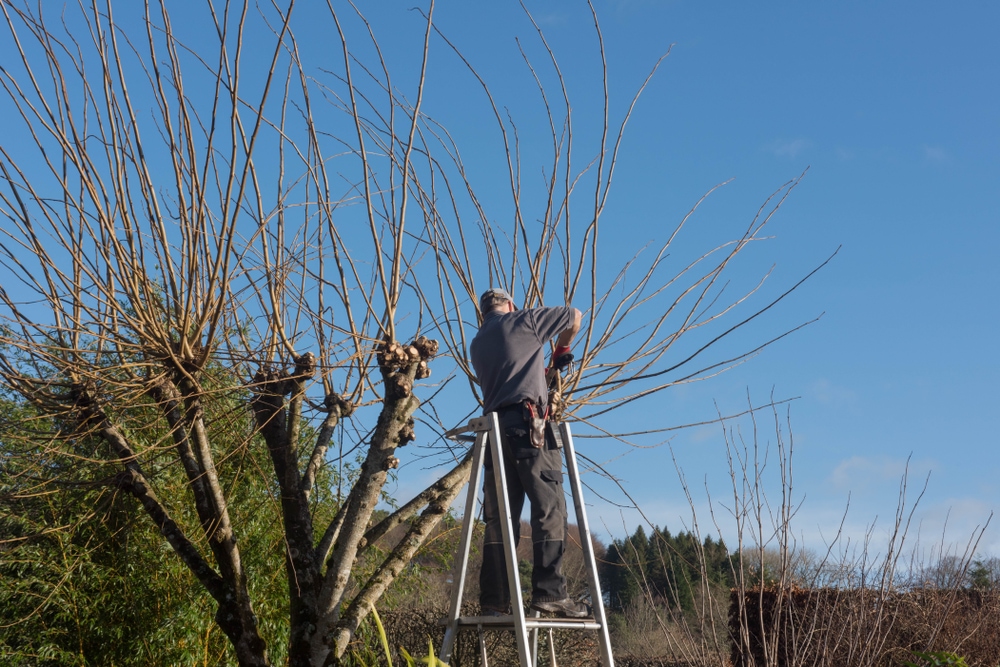
Properly equipped and knowledgeable, you’re ready to transform your garden through pollarding.
- Prepare tools and safety equipment
Safety comes first when pollarding. You’ll need a quality helmet to protect from falling debris, chainsaw-resistant trousers, sturdy gloves, and eye protection complying with British Standard EN 166 or 1731. For the actual cutting, gather:
– Secateurs for smaller branches
– Loppers for thicker stems
– A folding pruning saw (preferably a pull saw that cuts on the pull stroke)
– A first aid kit with plasters, bandages, sterile wipes, and eye dressings - Take a look
Select a framework of three to five main branches to form your tree’s structure
- Make the cut
Cut these branches back to 1/2 inches (1–2 cm) of last year’s growth, close to the pollarded head. Make cuts at the branch collar, taking care not to leave stubs or cut into the knuckle. Remove any spindly or weakly attached branches
Aftercare for newly pollarded trees
Subsequently, monitor your tree for new growth. An abundance of shoots will emerge—thin out overcrowded stems, removing unhealthy ones first, followed by any crossing branches. Furthermore, promptly remove any shoots growing from the trunk below the pollarded head by snapping them off rather than cutting.
Maintaining pollarded trees through the seasons
Let’s start in winter and follow the natural cycle.
Winter maintenance tasks
Winter presents the ideal window for primary pollarding work and most trees. January to March is the optimum period for cutting back branches, as trees are dormant with energy stored in their root systems. There are other benefits as well.
- Trees contain lower sap levels, reducing stress and bleeding
- The risk of fungal infections significantly decreases in cold weather
- The tree’s structure is more visible after leaf drop, making structural assessment easier
- Healing begins before spring growth, giving wounds time to closePlease note that Acer trees are the exception here. Their ideal pruning time is in late autumn.

Spring growth management
As temperatures rise, your pollarded tree responds with vigorous new growth. Upon this flush of activity, I recommend:
- Removing the weakest shoots first
- Eliminating any unhealthy-looking branches
- Taking out crossing branches that might rub and create wounds
- Thinning overcrowded areas for better airflow
Importantly, snap off (don’t cut) any shoots growing from the trunk below the pollarded head as soon as they appear. Cutting often encourages even more unwanted shoots to develop.
Summer care considerations
Summer brings different challenges. The focus lies on the following tasks.
- Ensuring adequate hydration, particularly during dry spells
- Applying balanced fertiliser if soil appears nutrient-poor
- Monitoring for pests and diseases which thrive in warmer conditions
Interestingly, some species actually benefit from summer pollarding—walnuts and certain fruit trees typically produce more fruit when pollarded during this season, including peach trees, nectarine trees, Japanese Plum trees, apple trees, pear trees.
Autumn preparation
Autumn is generally the least favourable time for pollarding, as decay fungi may enter pruning cuts. However, preparation remains important:
- Assess tree structure for potential winter storm damage
- Consider applying phosphorus and potassium-rich fertiliser (avoiding nitrogen) to support root development
- Complete any minor necessary pruning by late October, giving time for healing before frostOnly Acer trees prefer pollarding in autumn.
FAQ about pollarding
Tree pollarding is an ancient pruning technique that involves cutting back the upper branches of a tree to encourage dense foliage growth and control its size. It offers benefits such as improved tree health, extended lifespan, increased sunlight penetration, and enhanced safety by reducing the risk of falling branches.
The optimal time for pollarding is during the tree’s dormant period, typically late winter or early spring, before leaf growth begins. This timing reduces stress on the tree and minimises the risk of fungal infections. Avoid pollarding in autumn, as decay fungi may enter the cuts during this season.
Pollarded trees require regular maintenance, typically every 1–3 years, to maintain their shape and health. This involves cutting back new growth to the pollarding points during the dormant season. Additionally, year-round care is important, including removing weak shoots in spring, ensuring adequate hydration in summer, and preparing for winter storms in autumn.
Is it pollarding time yet?
Success with pollarding depends largely on choosing appropriate tree species and pollarding them at the right time. Most deciduous trees respond well when pollarded correctly. Regular maintenance during each season ensures healthy growth patterns and sturdy structure development.
Remember that pollarding works best as a long-term commitment rather than a one-time solution. Starting with young trees and following proper cutting techniques creates strong pollard heads that will serve your garden well for years. Armed with this knowledge, you can confidently shape your garden trees while preserving their health and vitality.
If you want to learn more about certain trees that benefit from pollarding, read out articles about Acer palmatatum, plum trees or catalpas.
Any questions left? Please leave a comment and ask away!
Happy pollarding!
-
Zero-Waste Gardening – This is How You Do It!Did you know that the average person wastes between 100 and 150 kilos of food every year? That's why the concept of zero-waste gardening is becoming increasingly important for environmentally conscious gardeners that like to do their gardening greener.Read more
-
Get Ready: Here are 5 Garden Trends for 2025Curious about the latest garden trends for 2025? From smart solutions to sustainable choices, discover all the outdoor trends that are transforming British gardens!Read more
-
How to Care for Plants in Winter: A Simple GuideWhen winter comes around, the care requirements of your plants change. Find out, how to adjust the care routine for your plants.Read more
-
Companion Planting Made Easy: A Step-by-Step TutorialStrategic plant partnerships can solve common gardening problems like pest invasion and disappointing yields. Find out which plants are great together in our companion planting guide.Read more
-
How to Grow Sweet Potatoes in Your GardenWant to know something splendid? A single sweet potato plant can produce 5 to 10 pounds (4.54 kg) of nutritious tubers—plenty to keep your family’s pantry well-stocked for weeks!Read more
-
Revive Your Lawn After Winter With These Easy StepsTired of winter lawn damage? Discover how to repair brown spots, remove weeds, and revitalise your grass for a thriving garden this spring.Read more
-
A Complete Guide On Lighting for Your House PlantsAchieve perfect lighting for houseplants! This guide covers light mapping, plant placement, and grow light tips to help your plants flourish indoors.Read more
-
How To Get Rid of Japanese Knotweed EffectivelyLearn to recognise Japanese knotweed quickly and control it effectively. Prevent damage to your garden with our tips for safe removal.Read more
Leave a comment
Your answer will be displayed on the site and the interested party will be notified by email.
Leave a comment
Have a question or want to share your experience? Leave us a comment.
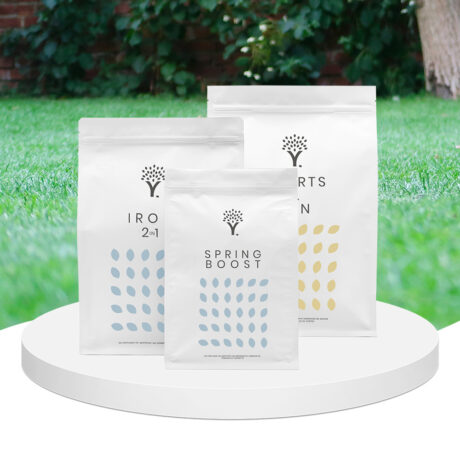
- Order by 2PM = shipped today
- 250.000+ satisfied customers!
- 60 day satisfaction guarantee
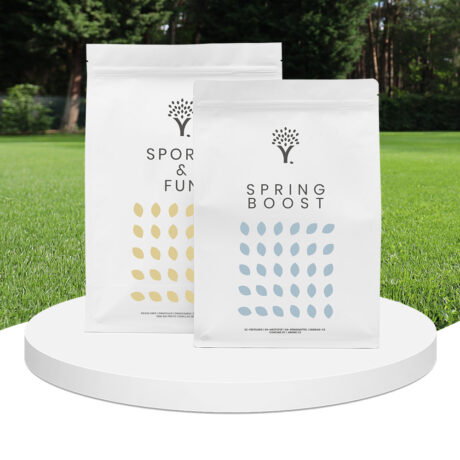
- Order by 2PM = shipped today
- 250.000+ satisfied customers!
- 60 day satisfaction guarantee

🌱 All important maintenance moments for your lawn during the year. Leave your email and we will send you the lawn calendar for free.
Enter your email
Receive the lawn calendar in the mail
Enjoy a green lawn all year round!


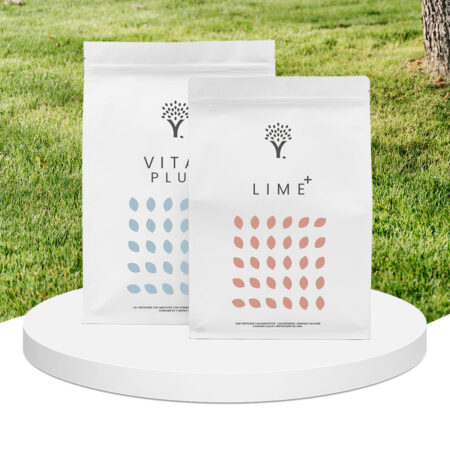


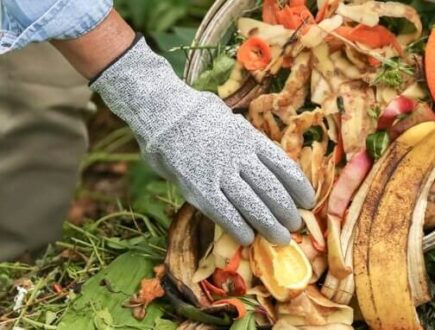
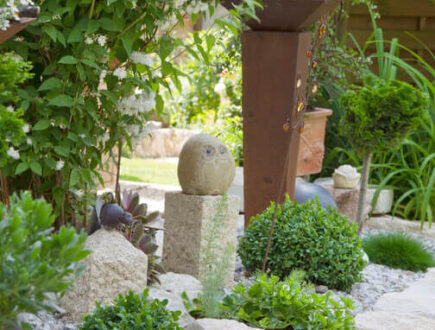



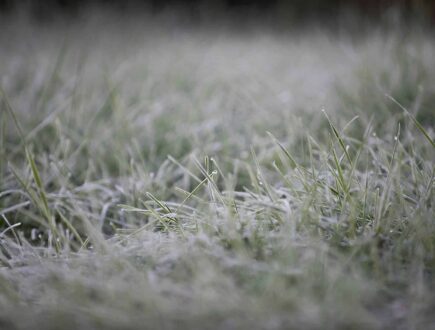

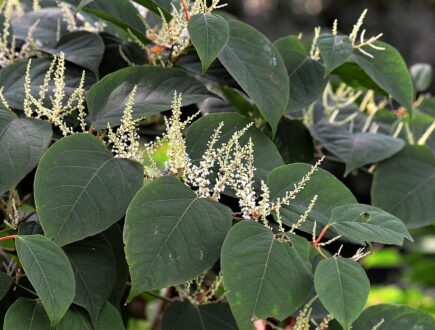
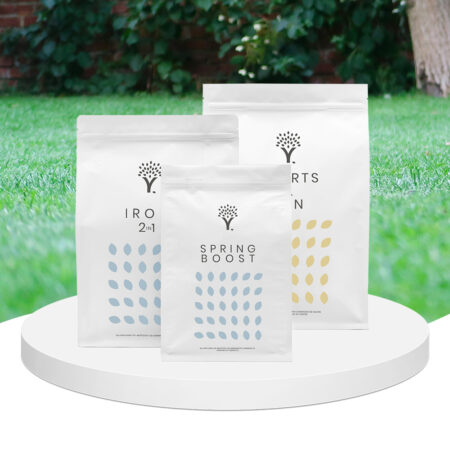

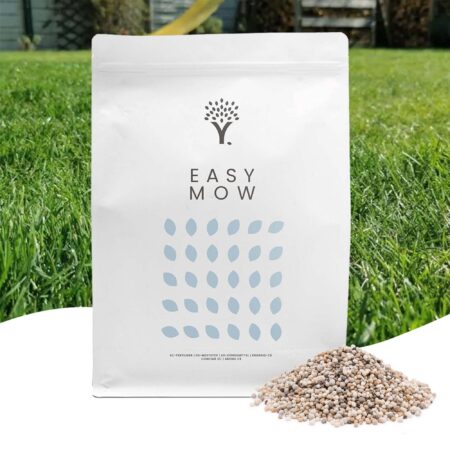
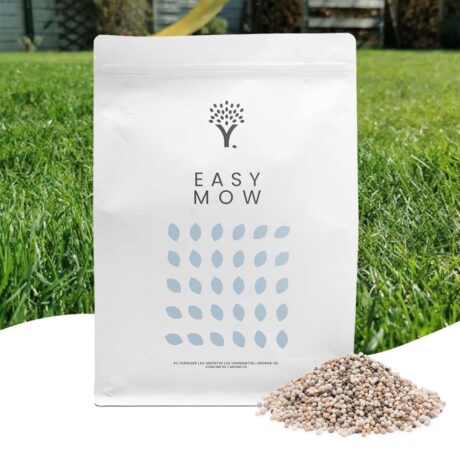

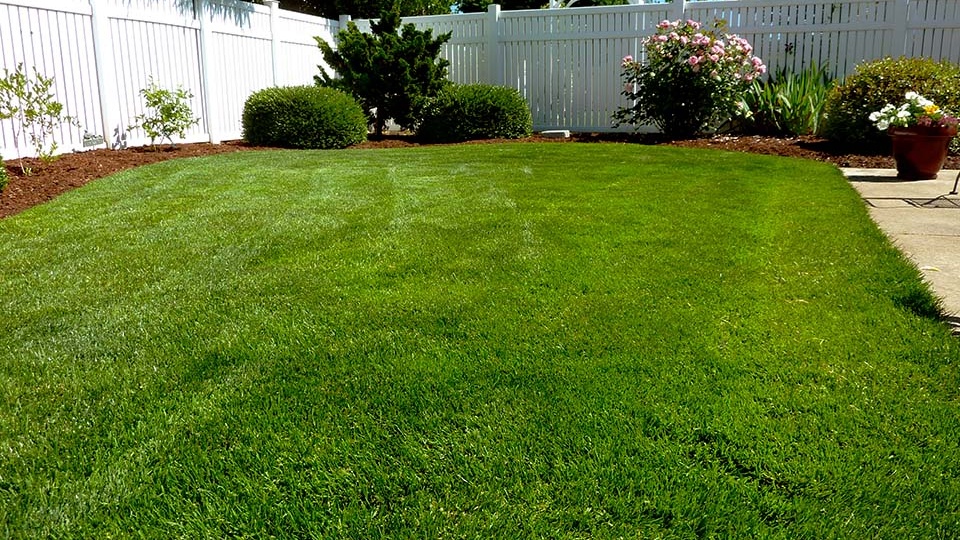
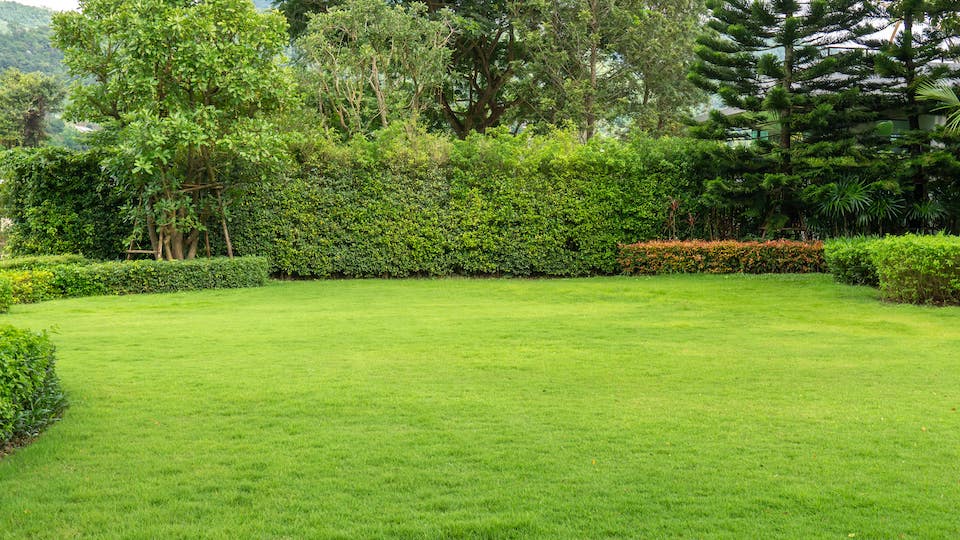

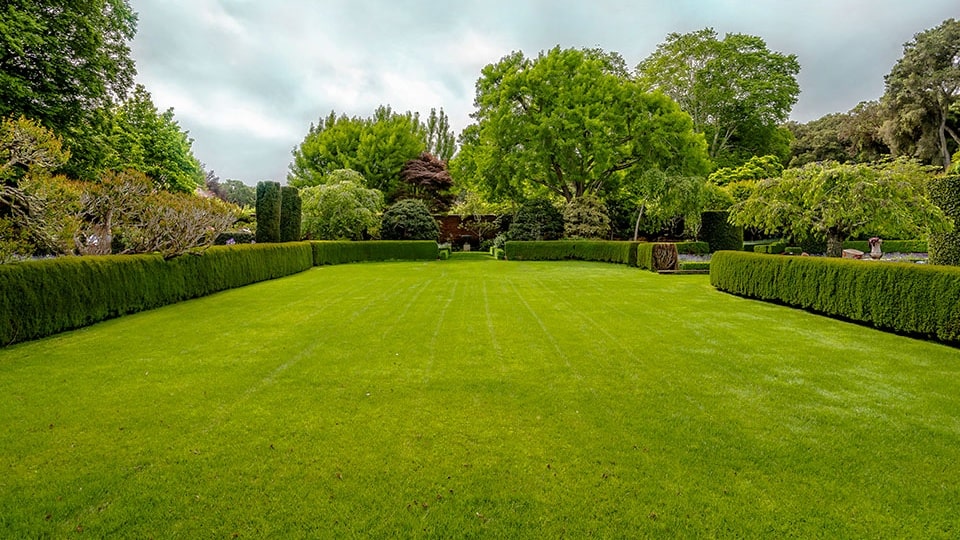
Comments (0)
There are no comments yet. Well then, what are you waiting for to
Be the first to write your comment!inaugurate this pretty page?
Do you have some comments?